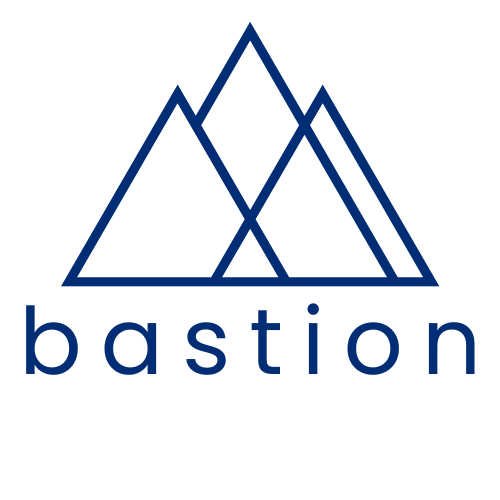Understanding PD Foundations: Modern Diplomatic Tradecraft
How developing PD Foundations at the State Department created a systematized diplomatic tradecraft and gave practitioners a unified framework for excellence.

During my time at the State Department, I was struck by a paradox in American diplomacy. We had some of the world's most talented diplomatic practitioners—seasoned professionals who could navigate complex international crises, build coalitions across cultural divides, and advance American interests in the most challenging environments. Yet when I asked these masters of diplomatic tradecraft to explain exactly how they did what they did, most struggled to articulate the systematic approaches underlying their success, and no two people identified the same approaches underlying their work. Unlike other complex professions—medicine, law, engineering—diplomacy hadn't evolved beyond an apprenticeship field where knowledge transferred through mentorship and experience rather than systematic training in core competencies.
The Genesis of Systematic Diplomatic Tradecraft
This was the origin story of what became Public Diplomacy Foundations–our doctrinal or diplomatic tradecraft document. We had accumulated decades of valuable "folk wisdom" about effective diplomatic practice, but this knowledge existed in scattered forms—dozens of different models, frameworks, and approaches that individual practitioners had developed or inherited from their mentors. This made it impossible to successfully scale our diplomacy, build on our successes, and enable each generation to be better than the last. This aligned with broader conversations about diplomatic modernization, like Dan Spokojny’s work on rethinking how the State Department operates. They highlighted the same institutional challenges.
The project began with our effort to create a single, unified framework that organized our collective understanding of diplomatic tradecraft. We started with public diplomacy for a straight-forward reason: it was within scope for my role as Director of the Office of Policy, Planning, and Resources for Public Diplomacy (R/PPR).
Codifying Excellence in Public Diplomacy
Thus, Public Diplomacy Foundations (PD Foundation) was born. PD Foundation is a set of documents that provides a conceptual underpinning for public diplomacy and then breaks down into five essential elements capturing the full lifecycle of effective public diplomacy practice:
- Applying policy in context,
- Analyzing audiences,
- Developing plans,
- Managing effectively, and
- Learning and adapting.
Later, we broke down these five elements into 28 teachable core competencies that represent the specific skills of diplomatic tradecraft that practitioners need to excel in each area. It was not an effort to replace the art and intuition that make diplomacy effective but to provide a common language and systematic foundation that could accelerate professional development and ensure consistent quality across different practitioners and posts.
The framework's excellence lies not in prescribing rigid methodologies, but in providing a common structure that practitioners can use to organize their thinking, communicate with colleagues, and systematically develop their capabilities. For example, the audience analysis element doesn't dictate exactly how to engage civil society groups in every country, but it provides proven frameworks for strategic listening, stakeholder mapping, behavioral change analysis, and audience prioritization that work across different cultural and political contexts.
Professionalizing American Diplomacy
Beyond improving individual practitioner capabilities, PD Foundations aimed to address several institutional challenges facing American diplomacy. First was the knowledge preservation problem: when exceptional practitioners retired or moved on, their expertise often departed with them. By codifying diplomatic tradecraft into systematic competencies, we could capture institutional knowledge and make it available to successive generations of diplomats.
Second was the standardization challenge. American diplomatic posts worldwide operate in vastly different environments, but they need consistent approaches to core functions like strategic planning, stakeholder engagement, and program evaluation. The competency framework provides flexible standards that maintain quality while allowing for local adaptation and providing a foundation for new innovations.
Third was the professional development gap. Unlike other government agencies with systematic training pipelines and clear advancement criteria, the foreign service had relied heavily on on-the-job learning and informal mentorship. While these approaches remain valuable, they needed to be supplemented with structured competency development that could accelerate learning and ensure comprehensive skill development.
Practical Tools for Today's Practitioners
The real value of PD Foundations lies not in its theoretical elegance, but in its immediate practical utility for working diplomats. Every element of the framework translates directly into tools that practitioners can use right now to improve their effectiveness, whether they're drafting strategic plans, preparing for stakeholder meetings, or designing public engagement campaigns.
Consider the challenge of audience prioritization—something every diplomatic practitioner faces daily. The framework provides systematic approaches for evaluating stakeholder influence, persuadability, and reachability rather than relying on intuition or institutional habit. Similarly, the planning competencies provide concrete frameworks for translating policy objectives into actionable initiatives, developing logic models that connect activities to outcomes, and designing measurable objectives that enable effective resource allocation and performance assessment. These aren't abstract concepts—they're practical methodologies that can immediately improve how practitioners approach their daily work.
The framework also addresses a critical challenge facing modern diplomatic practice: how to systematically learn from experience and adapt approaches based on evidence rather than tradition. The learning and adaptation competencies provide structures for collecting meaningful data, conducting useful evaluations, and sharing insights across the practitioner community in ways that actually improve collective performance.
The Continuing Evolution
PD Foundations is something meant to be built upon. PD Foundations provides a shared framework, enabling both the State Department and others to develop additional resources specifically designed to help practitioners deepen their capabilities and tackle increasingly complex challenges. There is certainly a lot more work to do. There are three obvious directions for growth.
Broaden the Framework: PD Foundations was crafted, intentionally, as a public diplomacy resource though it has applicability to all our diplomatic endeavors. It would be an even more valuable resource if expanded to represent the entirety of diplomatic tradecraft.
Deepen Resources: There is a lot of work to be done expanding the resources and tools for implementation, especially against the 28 competencies outlined in the PD Foundations.
Expand its Reach: Right now, PD Foundations is used to train practitioners through PD Tradecraft at the Foreign Service Institute and through other public diplomacy training. It reaches, at most, a few hundred practitioners a year. So many more people could and should benefit from training, resources, and tools aligned with the framework.
As the international system continues evolving at accelerating pace, American diplomacy's competitive advantage will depend not just on having talented practitioners, but on having systematic approaches to developing, deploying, and continuously improving diplomatic tradecraft across the entire foreign policy enterprise. PD Foundations represents one contribution to that essential modernization effort—a foundation for building the systematic diplomatic capabilities America needs for the challenges ahead.
Paul Kruchoski is




